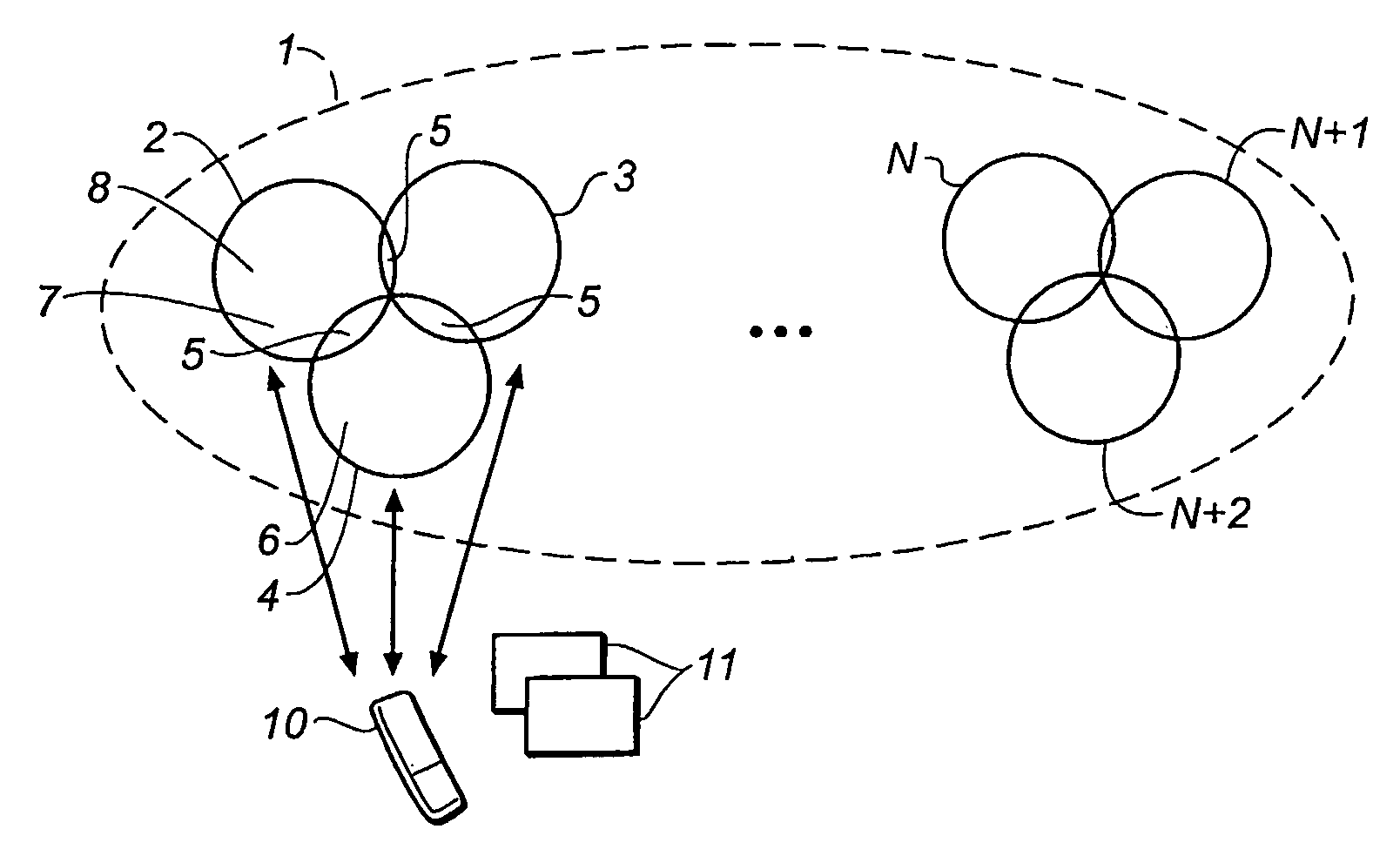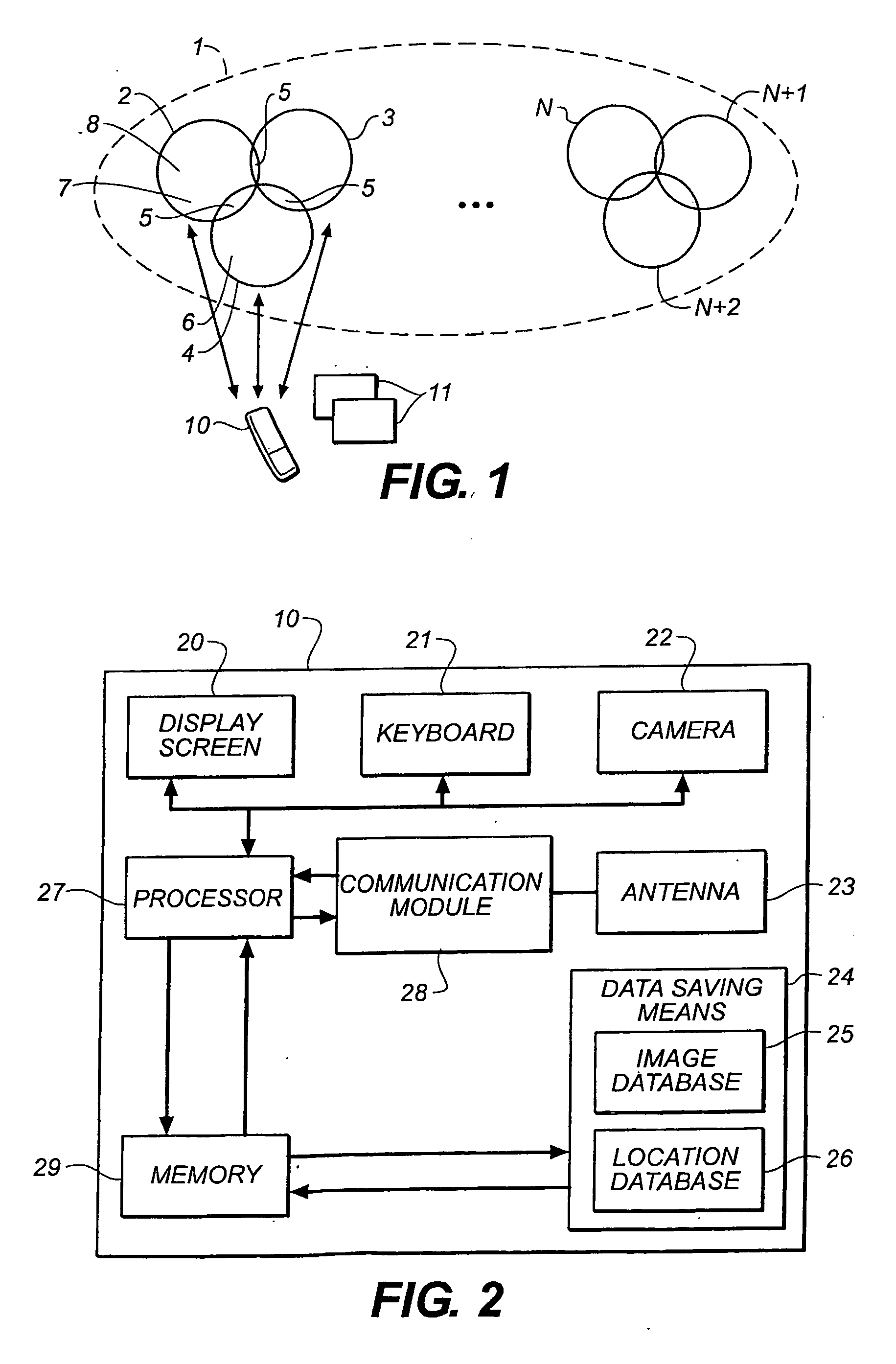Method For Adding Characterization Data During an Image Capture
- Summary
- Abstract
- Description
- Claims
- Application Information
AI Technical Summary
Benefits of technology
Problems solved by technology
Method used
Image
Examples
Embodiment Construction
[0018]The following description is a detailed description of the main embodiments of the invention, with reference to the drawings in which the same numerical references identify the same elements in each of the different figures.
[0019]FIG. 1 shows a cellular radiocommunication network 1. This network 1 has (N+1) cells, referenced from 2 to N+2 (or 2-N+2). Each cell contains a communication tower or radio relay. These towers enable a first mobile terminal 10 to communicate, for example with a second terminal of the same type (not shown on the figures) operating in the same network. The second terminal is for example a cellphone. Two neighboring cells 2, 3, 4 have a common area 5 where the signal emitted by each of the cells is sufficiently powerful, i.e. greater than a minimum power enabling reliable communication between the terminal 10 and the tower of each of the cells 2, 3, 4. The surface area of the common area 5 is generally relatively small compared with the total surface are...
PUM
 Login to View More
Login to View More Abstract
Description
Claims
Application Information
 Login to View More
Login to View More - R&D
- Intellectual Property
- Life Sciences
- Materials
- Tech Scout
- Unparalleled Data Quality
- Higher Quality Content
- 60% Fewer Hallucinations
Browse by: Latest US Patents, China's latest patents, Technical Efficacy Thesaurus, Application Domain, Technology Topic, Popular Technical Reports.
© 2025 PatSnap. All rights reserved.Legal|Privacy policy|Modern Slavery Act Transparency Statement|Sitemap|About US| Contact US: help@patsnap.com


